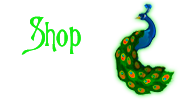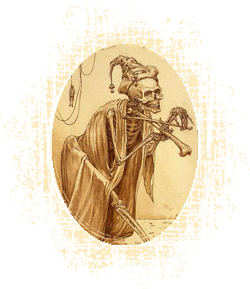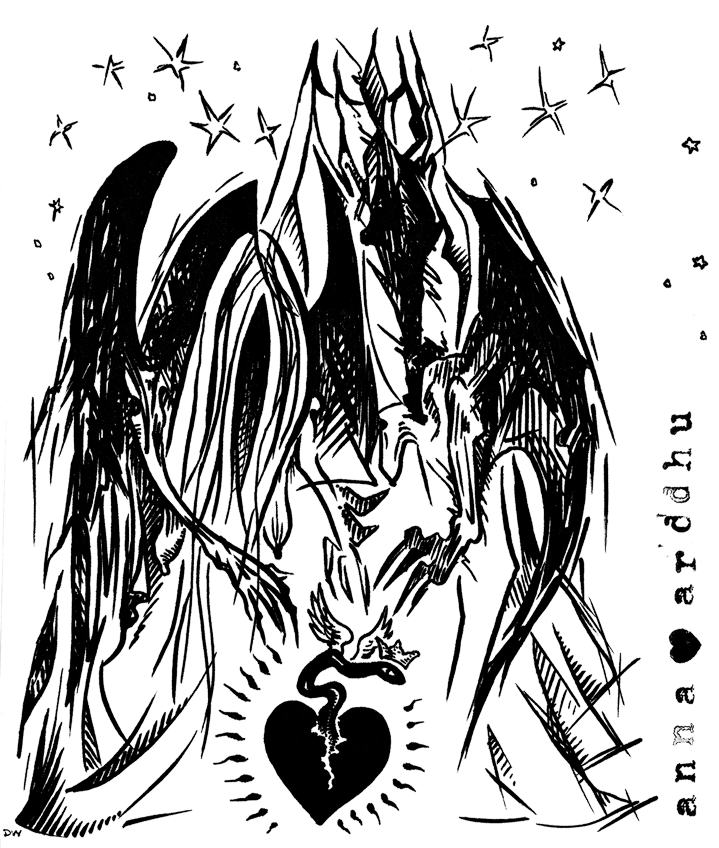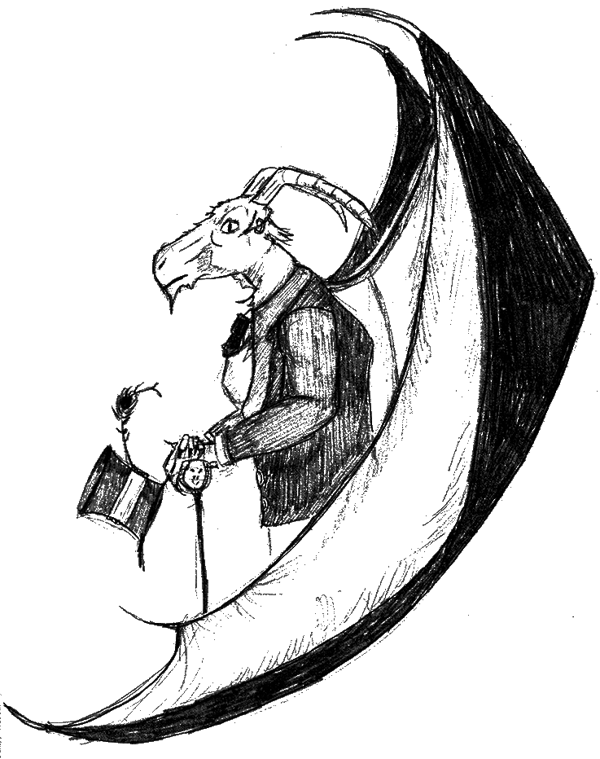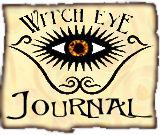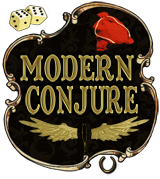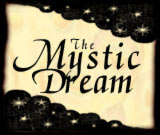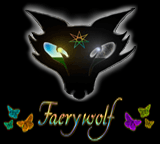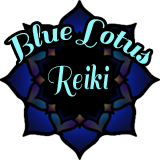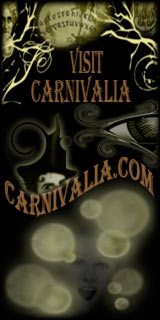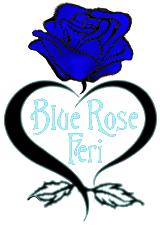  |
||||||||||||
|
||||||||||||
The Royal Darkness of Feri Tradition has many names aspecting his role as psychopomp:
From "The Gods of Infinity" Sage/Teacher/Guardian Moving still through our cycles of the seasons we can see a subtle shift as we approach autumn. Our beloved Horned God, once the epitome of strength and virility, begins his slow decline as the sun makes its journey into the dark half of the year. Reaching winter, our God is now the dread God of death, the Arddu 7, or "Royal Darkness". Another Horned God figure, He is usually depicted with the black wings of a bat, red eyes, a single red jewel upon his forehead, and a flaming torch between his horns. Traditionally he has the head of a goat, and the breasts of an old woman, but He has never appeared to me in that guise. I almost consistently see Him with the head of a bull; a symbol that I feel better reflects His mighty power and primal nature. His sexuality is at once more internalized than his previous counterparts, while at the same time still most definitely present. He is the Guardian of the Crossroads, and because He brings the knowledge and wisdom of death, is the great teacher. His emblem is the skull and crossbones for reasons that should need little elaboration. All who would pass through the dread gate must first confront Him. He can represent our own fears, and the ecstasy that we can experience when we face them…
From "Faery Crossroads" (expired website) He is the Spirit of Winter and Death. He may well embody what we fear. He is the Guardian of the Crossroads of the Path of the Living and the Path of the Spirits. All devils are derived from Him. His partner or parallel is The Crone. Once again, the divine moves toward androgyny. This god is visualized with the drooping breasts of an old woman on a human torso. He has a goat's head and lower body, and big black bat wings. On his forehead glows a large red jewel and between his horns is a flaming torch. His symbol is the Skull and Crossbones.
Traditionally He may appear as androgynous and very old, with the black wings of a bat, the drooping breasts of an old woman, and the head, horns, and legs of a goat. Between His horns rises a flaming torch, and on His forehead there is a large red jewel. His emblem is the skull and crossbones. He is the Baphomet, the Old Wizard. The Necromancer. In addition to His more common androgynous aspect He can appear as fiercely masculine as well. In this aspect He has most often come to me with the head of a bull, a symbol that I feel better reflects His mighty power and primal nature. Here He is often fiercely sexual, but in a way that is somewhat disturbing in that it is not human; it is a primal sexuality that is animalistic and even chthonic. Part of the lore that is sometimes attached to this deity is that He is less of a singular being and more of a “role” which is said to be filled by “the last soul to die before Samhain.”
From "Arkou" Ankou (Breton: Ankoù) is a personification of death in Breton mythology as well as in Cornish and Norman French folklore. This character is reported by Anatole Le Braz, writer and legends collector of the 19th century. Here is what he wrote about the Ankou in his best-seller "The Legend of Death" "The Ankou is the henchman of Death (oberour ar maro) and he is also known as the grave yard watcher, they said that he protects the graveyard and the souls around it for some unknown reason and he collects the lost souls on his land. The last dead of the year, in each parish, becomes the Ankou of his parish for all of the following year. When there has been, in a year, more deaths than usual, one says about the Ankou "war ma fé, heman zo eun Anko drouk," (on my faith, this one is a nasty Ankou)." There are many tales involving Ankou, who appears as a man or skeleton wearing a cloak and wielding a scythe and in some stories he is described as a shadow that looks like a man with an old hat and a scythe, often atop a cart for collecting the dead. He is said to wear a black robe with a large hat which conceals his face. Legend holds that he was the first child of Adam and Eve. Other versions have it that the Ankou is the first dead person of the year (though he is always depicted as adult, and male), charged with collecting the others' soul before he can go to the afterlife. He is said to drive a large, black coach pulled by four black horses, accompanied by two ghostly figures on foot. In the Celtic folklore of Brittany it is said that the Ankou appears as a death omen who collects the souls of the deceased. They describe the Ankou as a tall, haggard figure with long white hair. It is also perceived as a skeleton with a revolving head able to see everything everywhere. The Ankou is said to drive a cart and stops at the house of someone who is about to die. It knocks on the door, this sound is sometimes heard by the living, or it could give out a mournful wail like the Irish Banshee.
|
||||||||||||
|
||||||||||||
